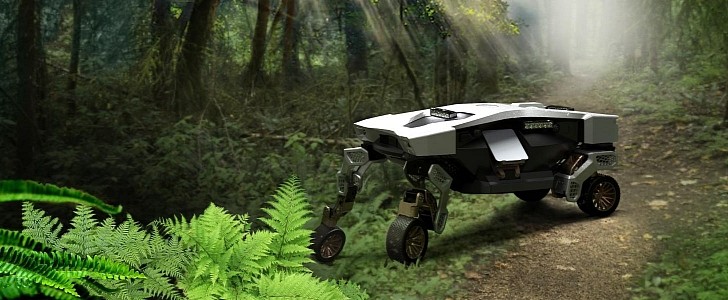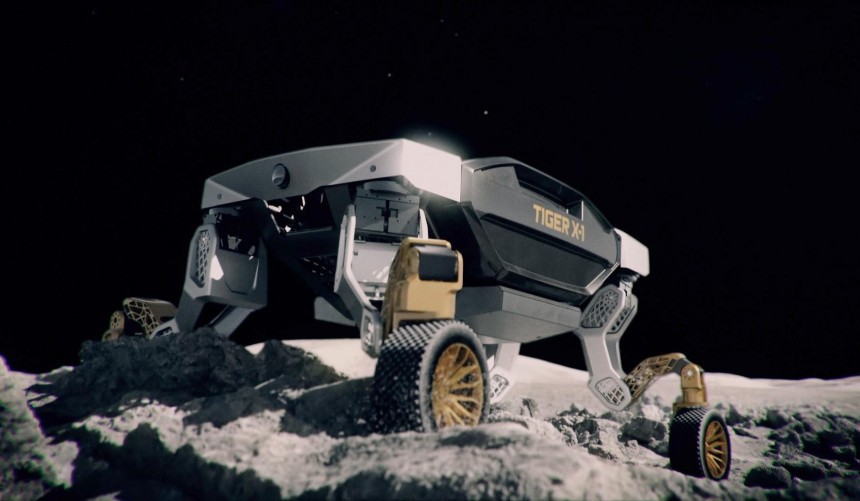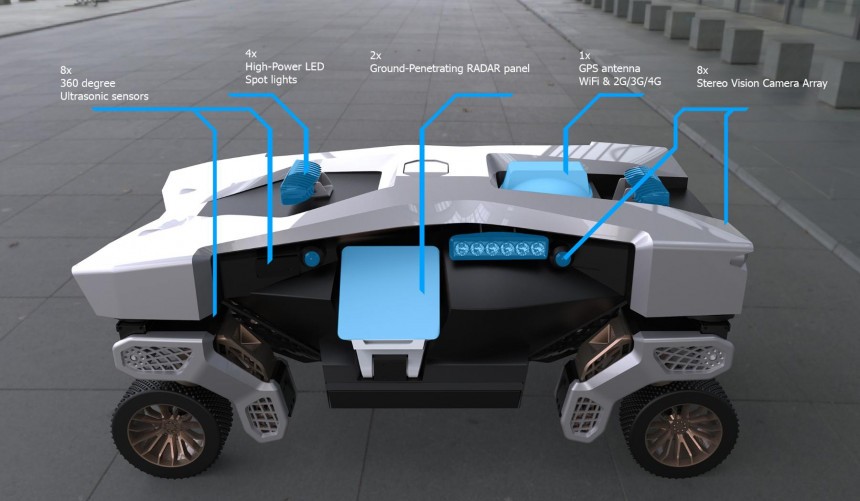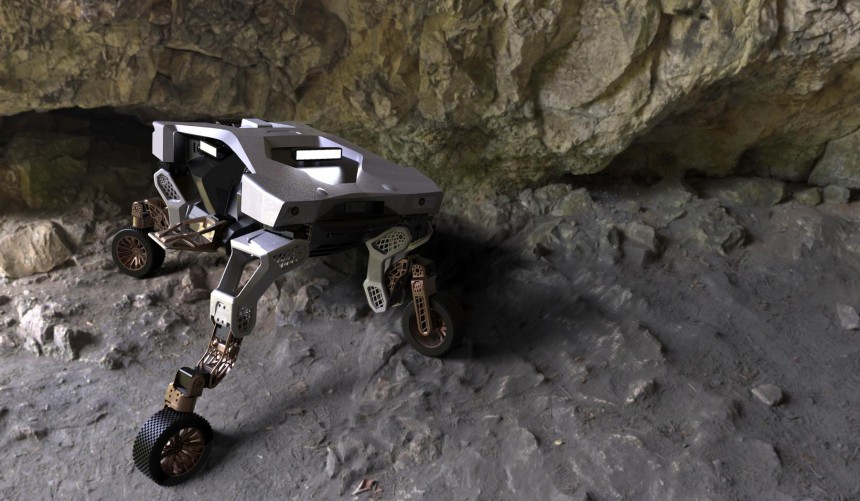It looks more like a lunar rover than a Tucson and can navigate through inaccessible terrain with the agility of a feline. Codenamed TIGER, this amazing experimental unmanned vehicle concept showcases Hyundai’s vision for the future of vehicular mobility.
The South Korean company’s ambition of becoming more than just a carmaker is not something new. Recently, it purchased the controlling stake of Boston Dynamics in a deal worth $1.1 billion, stating that this investment aims to develop logistic robots, new autonomous driving technologies, and smart factories.
Nevertheless, Hyundai has been developing robotic vehicles way before acquiring Boston Dynamics. At Consumer Electronics Show (CES) 2019, the company revealed the Elevate concept, its first ultimate mobility vehicle (UMV), which is basically an electric car with robotic legs that can transport people to places where even the most capable off-roader can’t access.
Building on the characteristics of the Elevate, the manufacturer revealed a new UMV concept recently. This one is unmanned, though, and was developed to transport payloads over inaccessible terrain to the most remote places.
Called TIGER (Transforming Intelligent Ground Excursion Robot), it was developed by Hyundai Motor Group’s New Horizons Studio in partnership with Autodesk and Sundberg-Ferar, the company that designed the Elevate concept.
“Vehicles like TIGER, and the technologies underpinning it, give us an opportunity to push our imaginations. We are constantly looking at ways to rethink vehicle design and development and re-define the future of transportation and mobility,” said Dr. John Suh, Head of the New Horizons Studio.
Built on a lightweight modular platform, the TIGER’s amazing features include a sophisticated leg and wheel locomotion system, 360-degree directional control, and a range of sensors and cameras to help it navigate to locations that are inaccessible for conventional vehicles.
It can also connect to unmanned aerial vehicles (UAVs), which can deliver or retrieve the UMV to or from any location while also being able to recharge its battery pack.
The TIGER’s removable body structure houses a large loading bay enabling the vehicle to carry various payloads such as aid packages in disaster-stricken areas.
It achieves maximum efficiency with its robotic legs retracted in all-wheel-drive mode because it moves by rolling traction, which requires less energy.
When it gets stuck or needs to go over terrain that’s inaccessible for the wheels alone, the UMV can use its innovative walking ability. It borrows this feature from the Elevate concept that gave us a glimpse at the future where we’ll be taking our cars for a walk rather than a ride.
Like the Elevate, Hyundai’s latest concept blends robotic and wheeled locomotion technologies to maximize its climbing capability and help it go beyond our current vehicles' limitations while keeping payloads more level than a typical ground vehicle.
These technologies include four foldable robotic legs created using carbon fiber composite additive printing. They feature six-point omnidirectional articulation that make even the most advanced suspension system look like a relic from a distant past.
Hyundai states that the TIGER can provide critical aid in emergency situations or help with research on Earth or other planets, making it seem like it has been developed strictly for humanity's benefit.
However, one must be extremely naïve to think that the TIGER won’t eventually be used in military applications because military contracts are by far the most profitable. If a revolutionary technology can be weaponized, the military-industrial complex will definitely want it.
Nevertheless, Hyundai has been developing robotic vehicles way before acquiring Boston Dynamics. At Consumer Electronics Show (CES) 2019, the company revealed the Elevate concept, its first ultimate mobility vehicle (UMV), which is basically an electric car with robotic legs that can transport people to places where even the most capable off-roader can’t access.
Building on the characteristics of the Elevate, the manufacturer revealed a new UMV concept recently. This one is unmanned, though, and was developed to transport payloads over inaccessible terrain to the most remote places.
“Vehicles like TIGER, and the technologies underpinning it, give us an opportunity to push our imaginations. We are constantly looking at ways to rethink vehicle design and development and re-define the future of transportation and mobility,” said Dr. John Suh, Head of the New Horizons Studio.
Built on a lightweight modular platform, the TIGER’s amazing features include a sophisticated leg and wheel locomotion system, 360-degree directional control, and a range of sensors and cameras to help it navigate to locations that are inaccessible for conventional vehicles.
The TIGER’s removable body structure houses a large loading bay enabling the vehicle to carry various payloads such as aid packages in disaster-stricken areas.
It achieves maximum efficiency with its robotic legs retracted in all-wheel-drive mode because it moves by rolling traction, which requires less energy.
When it gets stuck or needs to go over terrain that’s inaccessible for the wheels alone, the UMV can use its innovative walking ability. It borrows this feature from the Elevate concept that gave us a glimpse at the future where we’ll be taking our cars for a walk rather than a ride.
These technologies include four foldable robotic legs created using carbon fiber composite additive printing. They feature six-point omnidirectional articulation that make even the most advanced suspension system look like a relic from a distant past.
Hyundai states that the TIGER can provide critical aid in emergency situations or help with research on Earth or other planets, making it seem like it has been developed strictly for humanity's benefit.
However, one must be extremely naïve to think that the TIGER won’t eventually be used in military applications because military contracts are by far the most profitable. If a revolutionary technology can be weaponized, the military-industrial complex will definitely want it.













